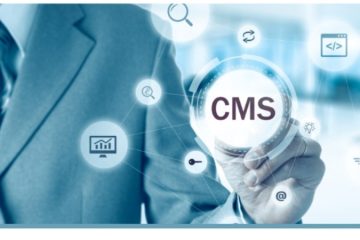Are inconsistencies, duplicates and errors impeding your migration process?
Transferring numerous files, ensuring a seamless migration and avoiding costly errors can be overwhelming.
But the future of data migration is not just a concept; it’s a reality. Artificial Intelligence and Machine Learning are changing and transforming the landscape of data migration solutions, opening up a world of exciting possibilities.
Curious to know how? Dig into the post to know more.
What are Modern Data Migration Solutions?
Are you still relying on legacy methods to migrate your data? If yes, modern data migration solutions will help you overcome the struggle to handle large and complex data that offers real-time insights into your migration process.
Modern data migration solutions use automated tools to streamline data transfer between systems, ensuring the accuracy, efficiency and security of your data.
With several challenges of traditional methods, modern data migration solutions not only cater to the growing data volumes but also:
- Provides robust cloud database migration solutions
- Helps you with data-driven decision-making
- Adheres to regulatory compliance and security measures
- Handles repetitive tasks with automation
- Ensures clean and filtered data
- Make the migration process scalable for future growing datasets
- Allows proactive issue identification and resolution
- Integrates seamlessly with cloud platforms
You can easily transfer your data from one place to another, whether on-premises, in the cloud, or hybrid configurations with modern data migration solutions.
Let’s see how AI and ML incorporate automation, scalability and security for your business.
A Glimpse into AI and ML
Artificial Intelligence: AI is a machine’s ability to perform tasks and processes traditionally associated with human intelligence. AI machines are programmed to think and learn like humans. These systems mimic human intelligence for tasks such as decision-making and problem-solving.
Machine Learning: ML is a subset of AI that focuses on developing algorithms and methods. These statistical methods enable machines to learn from and make predictions based on data. These algorithms improve automatically through experience and data use.
Artificial Intelligence and Machine learning are changing many industries. Read ahead to see how they can affect your business.
Benefits of AI and ML in Data Migration
If you want to move your data like a pro, AI and ML are for you. Here are 5 ways you can harness the power of AI and ML with data migration best practices to overcome migration challenges.
- Automation and Efficiency
Stop dragging on tedious tasks forever. You can automate tasks, such as data mapping, data transformation and validation with AI and machine learning. Automating these tasks slashes the time and effort required to complete a successful migration.
- Risk Mitigation
No more stress of data loss or corruption. AI and ML predict and mitigate the risks of data loss and corruption. They analyze the patterns and past data moves to predict problems with pre-migration simulations. By identifying the potential issues, you can optimize your data migration strategy accordingly.
- Data Quality and Consistency
Poor data quality and inconsistency can leave you with a mess of errors, missing datasets and an overall data nightmare.
However, AI and ML can identify and correct anomalies, inconsistencies and hindrances in your data. You can get real-time feedback and corrections with AI-driven validation processes.
- Scalability
With the data growing every second, your business will grow too. Cloud database migration solutions make it ideal for your business to handle big data.
AL and ML adapt to your business and growing data. They scale to meet new demands with much effort, significant configuration changes or additional resources.
- Cost Reduction
AI and ML can help you slash your bills and increase your ROI (return on investment.) Automating tasks and improving accuracy with AI and ML can help you reduce overall migration costs and improve bottom-line performance.
AI-powered migrations are here to stay, from planning and optimizing the entire migration process to minimizing downtime and improving business performance. However, it is crucial to have the right team to successfully implement AI and ML migration.
Are you not sure where to start? Below are a few AI and machine-learning techniques that can help you with the process.
Top 4 AI and ML Techniques in Data Migration
From being a complex and labor-intensive process to sophisticated operations, data center migration services are reshaping how businesses handle their data transfers.
Here are the top 4 artificial intelligence and machine learning techniques that are redefining the migration processes across business.
- NLP (Natural Language Processing)
NLP is a subfield of AI that utilizes machine learning that helps interpret, manipulate and comprehend human language. It is like a universal translator for your data.
NLP can:
- Interpret data
- Map unstructured data
- Facilitate the migration of unstructured data into a structured database
- Helps businesses deal with vast amounts of data
NLP bridges the language gap and ensures the migration of data seamlessly.
- Predictive Analysis
Predictive analytics is a form of data analysis that helps you answer the question, “What may happen next?” Predictive analytics helps you predict future trends and events using machine learning techniques.
You can predict potential issues before they even happen with predictive analysis. You can even see the glitches that you didn’t even know existed.
Leveraging predictive analytics in data migration, you can:
- Analyze historical data and migration patterns
- Forecast potential issues and errors
- Minimize downtime and data loss
Basically, you can ensure a smooth and stress-free data move with predictive analytics.
- Reinforcement Learning
Reinforcement learning is a machine-learning technique that teaches software to make decisions that yield the best results. It mimics and observes the trial-and-error learning process similar to humans to achieve goals.
In data migration, reinforcement learning continuously improves the overall migration process. This technique trains the algorithms through trial-and-error to optimize data transformation and migration process.
Your systems will constantly learn and adapt for peak efficiency and accuracy with reinforcement learning.
- Anomaly Detection
Anomaly detection is a machine-learning process that helps you identify unusual trends and patterns in datasets. Unlike traditional methods, AI and ML can help you find the hidden anomalies in your datasets.
With anomaly detection, anomalies in data, such as duplicates and discrepancies are detected easily. These anomalies may otherwise go undetected and unnoticed with traditional methods.
You can ensure a clean and accurate migration with early detection of these anomalies.
Incorporate AI and ML for your data migration to make smarter moves. Enhance data quality, mitigate risks and take your business to the next level with innovation and intelligence.
Predicting The Future
The future of AI and ML-powered data migration looks promising with the need for data management. As AI and ML are going to improve, the lifecycle of data migration will stand to benefit more. Some emerging trends include:
AI-Driven Data Integration
Using AI with data migration best practices presents a complete ETL(Architecture, Methodologies, and Tools) solution that interconnects data extraction, transformation and loading.
Hyper Automation
Integrating other advanced technologies, like Robotic Process Automation (RPA), to build automated and intelligent migration solutions backed up by AI and ML.
Self-Healing Systems
Self-healing systems are a promising trend in data migration. These systems are designed to determine and fix any issues that may arise during the migration process.
By minimizing the need for human intervention, they can significantly streamline and expedite the data migration process, making it more efficient and less prone to errors.
The next generation of emerging technologies has the potential to make data migration more smooth, adaptive and intelligent. These advancements will also allow businesses to realize the full potential of their data.
Conclusion
Want to make the most of your data? With the fundamental shifts in the data migration processes and systems, you cannot even think about manual entries.
So if you want to stay competitive and in the loop with the tech-infused future, feel free to contact us at Augmented Systems. We keep you and your organization updated with the latest trends.
Co-Founder & CEO
Kandarp Patel is CEO of Augmented Systems, with a rare mix of experience in database systems and leadership. Under his strategic guidance, the cutting-edge IT solutions firm has been working to the sky of success and has delivered exceptional output consecutively.
Augmented Systems, under the visionary leadership of Mr. Patel, has embraced a design thinking culture. This culture empowers our team to push boundaries and deliver groundbreaking solutions. It is Mr. Patel’s unwavering commitment to excellence that has enabled our company to not just adapt but thrive in the rapidly changing technological landscapes of our world.



